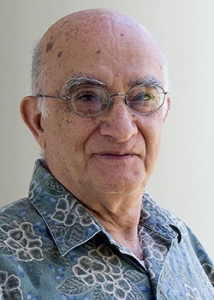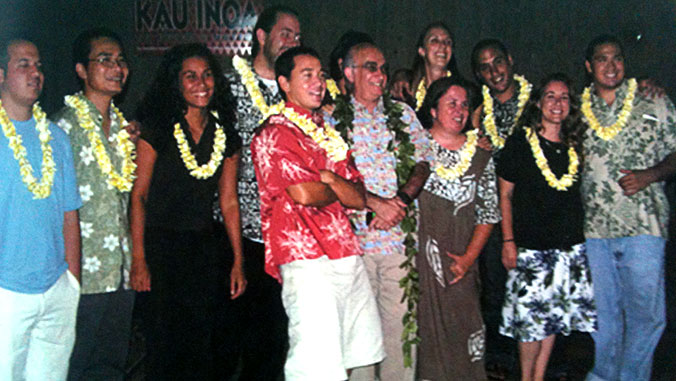
Luciano Minerbi has contributed his life’s collaborative work to the field of urban planning through education, research and community service at the University of Hawaiʻi at Mānoa, as well as in communities throughout Hawaiʻi and the Pacific region. Over the course of his 50-year career since 1969, the emeritus professor from UH Mānoa’s Department of Urban and Regional Planning (DURP) has amassed a collection which he is donating and is making available for scholarly research at the UH Mānoa Library University Archives.

Minerbi is sharing his collegial work generated with colleagues, students and community partners with the intent to bring forth knowledge on culturally appropriate place-based management to learn “where we come from, where we are and where we are going,” linking history to current planning.
“As an ancient Latin once said, ‘There’s no truth without memory,’” said Minerbi.“There is no such a thing as a ‘dated’ report because what is useful is to learn the context in which it was created. With that knowledge we are in a position to better face changing circumstances by engaging in a planning approach that is anticipatory problem solving.”
The Luciano Minerbi Collection
The Luciano Minerbi Collection includes his works in sustainable island development in urban and rural settings, land readjustment, watershed and land management, cultural impact assessments, heritage landscape analysis, community planning and place-based management.
As a former DURP student, Archivist for University Records Helen Wong Smith recognized the value of Minerbi’s papers and invited him to make the donation to University Archives.
“This collection will provide a valuable resource on urban planning in Hawaiʻi and give students and researchers insight into the career and working style of one of Hawaiʻi’s noted professionals,” said University Librarian Clem Guthro.
The collection to date consists of 60 linear feet of unique posters and exhibits which were used to showcase data collection and report findings to the community, as well as correlating maps to past projects and records documenting his advocacy for local communities, completed cultural assessments and course-related practicum.
This collection will provide a valuable resource on urban planning in Hawaiʻi
—Clem Guthro, University Librarian
Some of Minerbi’s published and co-authored work includes topics on tourism, coastal zones, indigenous people and land use planning. This work incorporates aspects of oral histories, indigenous populations, community and indigenous knowledge and protocols.
Notable projects that are available include the Hawaiʻi Environmental Risk Ranking Project, Pāpōhaku Dunes Cultural and Natural Resource Preservation Plan, Cultural Advocacy Network Development and much more. One can also find a wide range of area maps from projects conducted by Minerbi and his students, such as Koʻolaupoko, Kahaluʻu, Kaʻū, Puna, Waipiʻo Valley, Hoʻokena and Hanalei.
More on Minerbi
Minerbi has earned numerous university and community service awards and local planning recognitions for excellence in curriculum and course development and helping preserve Hawaiʻi’s culture and environment. Even after retirement, Minerbi remains highly engaged with the university and community. He is currently serving on the Hawaiʻi Advisory Committee of the U.S. Department of Justice Commission on Civil Rights.
Support the collection
Minerbi and Wong Smith are collaborating to make additional research material available for transfer and processing to the UH Mānoa Archives.
Consider a gift to support UH Mānoa Library’s work to preserve and disseminate the collection. You may give online and honor Minerbi. Select “Gift in honor of” and add Luciano Minerbi.
Learn more about Minerbi and the collection.
—By Arlene Abiang


